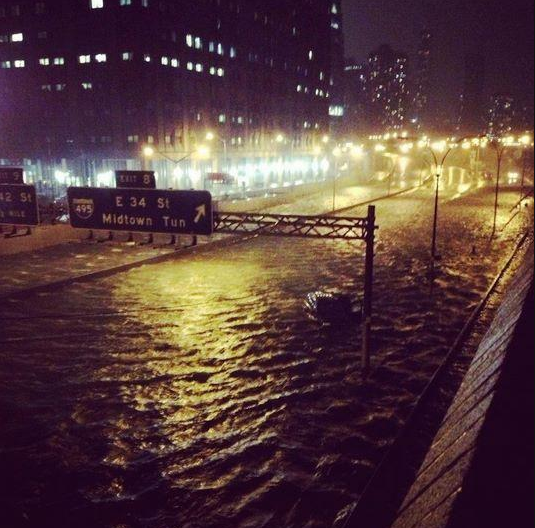Connecticut Approves GMO Labeling!…Sort Of.
On Monday, June 3rd, Connecticut became the first state to pass a bill that would require food manufacturers to label products that contain genetically modified ingredients ? but only after other conditions are  met. The final version of the bill includes a crucial catch: The labeling requirement won?t actually go into effect until similar legislation is passed by at least four other states, one of which borders Connecticut. Also, the labeling adopters must include Northeast states with an aggregate population of at least 20 million. This ?trigger clause? is meant to diminish fears that Connecticut could face higher food prices and lawsuits from major food companies as a result. It is now up to the surrounding states, including New York, to push for a similar bill to pass.
met. The final version of the bill includes a crucial catch: The labeling requirement won?t actually go into effect until similar legislation is passed by at least four other states, one of which borders Connecticut. Also, the labeling adopters must include Northeast states with an aggregate population of at least 20 million. This ?trigger clause? is meant to diminish fears that Connecticut could face higher food prices and lawsuits from major food companies as a result. It is now up to the surrounding states, including New York, to push for a similar bill to pass.
Wasted Food Means Wasted Water
Food waste is not only bad for your pocket, but also for the environment. According to the World Resources Institute, inside the 1.3 billion tons of food wasted every year worldwide is 45 trillion gallons of water. This represents a staggering 24 percent of all water used for agriculture. Agriculture is the biggest user of freshwater, and with freshwater resources diminishing fast, many more hungry and thirsty people will be joining the global population. Not all food waste is created equal.? As WRI notes, a pound of wheat flour on average contains 12 percent water and 1,639 calories, whereas a pound of apples, on average, contains 81 percent water and 766 calories. Fruits and vegetables are the largest source of loss and waste on a weight basis ? in part, because they contain more water than other foods. Meat, of course, requires more water in its production than any other food, because animals devour  so much feed that in turn has to be grown with water. Meat production requires between 8 and 10 times more water than grain production. In developing countries, food waste is in large part due to farmers struggle with keeping food fresh before it reaches the consumer. Increased access to simple equipment, like silos for airtight food storage and crates for fruits and vegetables, would help a lot, WRI says. In contrast, wealthier countries, food waste usually takes place in homes and restaurants. You can reduce your contribution to food and water waste but eating leftovers before they spoil, composting, and reducing your meat consumption.
so much feed that in turn has to be grown with water. Meat production requires between 8 and 10 times more water than grain production. In developing countries, food waste is in large part due to farmers struggle with keeping food fresh before it reaches the consumer. Increased access to simple equipment, like silos for airtight food storage and crates for fruits and vegetables, would help a lot, WRI says. In contrast, wealthier countries, food waste usually takes place in homes and restaurants. You can reduce your contribution to food and water waste but eating leftovers before they spoil, composting, and reducing your meat consumption.
New Climate Data Depict New York City More at Risk
The Bloomberg administration has issued new warnings about New York City?s vulnerability to climate change, offering updated data to encourage businesses, residents and perhaps even future mayors to better prepare against hotter weather, fiercer storms and increased rainfall. ?Officials are  estimating that more than 800,000 city residents will live in the 100-year flood plain by the 2050s. That figure is more than double the 398,000 currently estimated to be at risk, based on new maps the Federal Emergency Management Agency released Monday. ?Between 1971 and 2000, New Yorkers had an average of 18 days a year with temperatures at or above 90 degrees. By the 2020s, that figure could be as high as 33 days, and by the 2050s, it could reach 57, according to data collected by the New York City Panel on Climate Change. ?Between 1900 and 2013, sea levels in New York City rose about a foot, administration officials said. ??It will not take another 100 years to get another foot,? said Caswell F. Holloway IV, a deputy mayor.
estimating that more than 800,000 city residents will live in the 100-year flood plain by the 2050s. That figure is more than double the 398,000 currently estimated to be at risk, based on new maps the Federal Emergency Management Agency released Monday. ?Between 1971 and 2000, New Yorkers had an average of 18 days a year with temperatures at or above 90 degrees. By the 2020s, that figure could be as high as 33 days, and by the 2050s, it could reach 57, according to data collected by the New York City Panel on Climate Change. ?Between 1900 and 2013, sea levels in New York City rose about a foot, administration officials said. ??It will not take another 100 years to get another foot,? said Caswell F. Holloway IV, a deputy mayor.

Comments are closed.